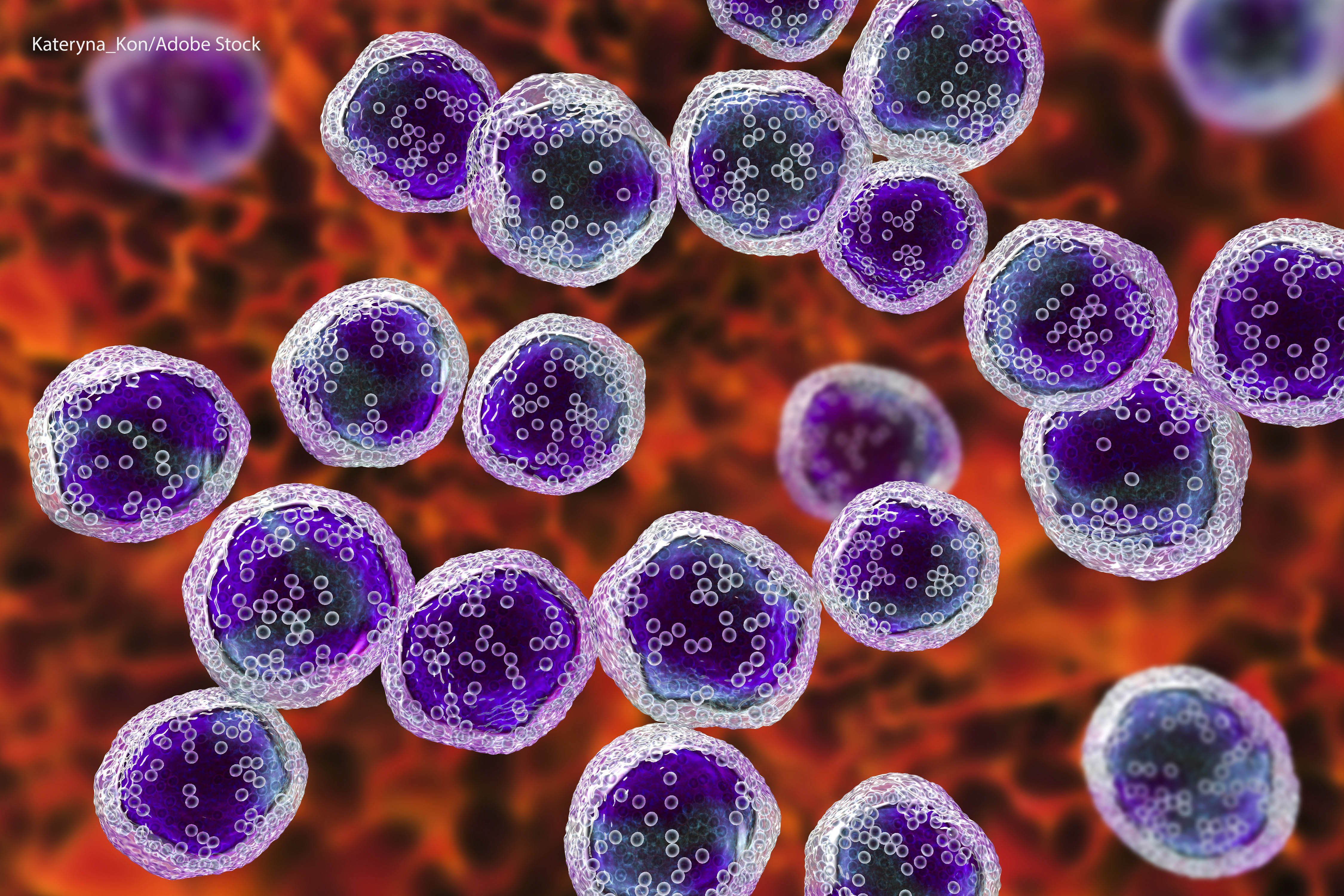Loncastuximab Tesirine Elicits Robust Responses in R/R Follicular Lymphoma
The toxicity profile of loncastuximab tesirine plus rituximab was consistent with prior clinical trials assessing each agent as monotherapy.
The toxicity profile of loncastuximab tesirine plus rituximab was consistent with prior clinical trials assessing each agent as monotherapy.

Loncastuximab tesirine-lpyl (Zynlonta) plus rituximab (Rituxan) elicited robust responses and demonstrated a manageable safety profile when treating patients with relapsed or refractory follicular lymphoma previously treated with 1 or more lines of therapy, according to results from a phase 2 trial (NCT04998669) published in The Lancet Haematology.1
Efficacy data from the trial revealed that the complete response rate (CRR) at 12 weeks was 67% (n = 26/39), which cleared the target rate of 50% for the alternative hypothesis. Additionally, the null hypothesis CRR of 30% or lower was rejected (one-sided P <.0001). The overall response rate (ORR) at week 12 was 97% (n = 38/39), and the best CRR across weeks 12 and 21 was 77% (n = 30/39) after 4 patients with a partial response (PR) at week 12 improved to a CR by week 21.
Responses were observed across high-risk subgroups in post hoc analysis, including among patients with 1 or more Groupe d’Etude des Lymphomes Folliculaires (GELF) criteria, who had a best ORR of 97% (n = 35/36) and a best CRR of 75% (n = 27/36). Benefit was also observed in patients with a high Follicular Lymphoma International Prognostic Index (FLIPI) score, at rates of 96% (n = 23/24) and 67% (n = 16/24), respectively, and those presenting with progression or relapse of disease within 24 months (POD24) after first line of treatment, at rates of 100% and 85% (n = 17/20).
“The toxicity profile of loncastuximab tesirine with rituximab was consistent with previous clinical trials of the drugs as monotherapy. No new safety concerns associated with loncastuximab tesirine were identified, and no increase in toxicity was observed in combination with rituximab,” Juan Pablo Alderuccio, MD, assistant professor of Medicine in the Division of Hematology of the Department of Medicine at the Sylvester Comprehensive Cancer Center of the University of Miami Miller School of Medicine in Florida, wrote in the publication with study coinvestigators.1 “[L]oncastuximab tesirine with rituximab showed robust [CRRs], and met the study’s primary endpoint. The 12-month progression-free survival [PFS] rate at the data cutoff was 94.6% (95% CI, 79.9%–98.6%), which included patients with difficult-to-treat relapsed or refractory follicular lymphoma.”
Investigators of the single-arm phase 2 trial screened and enrolled 39 patients with relapsed or refractory follicular lymphoma, who were assigned to receive loncastuximab tesirine. Patients received intravenous loncastuximab tesirine administered on an outpatient basis over 30 min once every 3 weeks. Dosing was administered on day 1 of 21-day cycles, at 0.15 mg/kg for the first 2 cycles, followed by 0.075 mg/kg over subsequent cycles.
Additionally, 375 mg/m2 of intravenous rituximab was given for 4 once-weekly doses during the induction phase of the trial. Following the induction phase, intravenous rituximab was administered once every 8 weeks for three 9-week maintenance cycles. For a second maintenance phase, patients with a CR discontinued loncastuximab tesirine and received 2 additional rituximab doses every 8 weeks.
The median age of enrolled patients was 68 (IQR, 58-77). A total of 54% of patients were male, 95% were White, and 56% were Hispanic. Most patients had an ECOG performance status of 0 (74%), had grade 1 or 2 follicular lymphoma (72%), and had Ann Arbor stage IV disease (54%). Most patients had 3 (38%) or 4 (23%) FLIPI risk factors, had β2 microglobulin levels greater than 2.3 mg/L (69%), had GELF criteria of 1 or greater (92%), had POD24 after first line of treatment (51%), and had 1 previous line of therapy (67%).
The primary efficacy end point was proportion of patients achieving a CR.2 Secondary end points included ORR, incidence of adverse effects (AEs), PFS, and overall survival.
Grade 1 or 2 treatment-emergent AEs (TEAEs) were observed in 95% of patients, with 46% and 13% experiencing grade 3 or 4 TEAEs, respectively. The most common any-grade TEAEs included hyperglycemia (44%), alkaline phosphatase increases (41%), neutropenia (38%), fatigue (38%), aspartate aminotransferase increases (38%), and alanine aminotransferase increases (38%). Additionally, the most common grade 3 or higher TEAEs included lymphopenia (21%) and neutropenia (13%).
References
- Alderuccio JP, Alencar AJ, Schatz JH, et al. Loncastuximab tesirine with rituximab in patients with relapsed or refractory follicular lymphoma: a single-centre, single-arm, phase 2 trial. Lancet Haematol. 2025;12(1):e23-e34. doi:10.1016/S2352-3026(24)00345-4
- Loncastuximab tesirine in combination with rituximab in patients with relapsed or refractory follicular lymphoma. ClinicalTrials.gov. Updated August 22, 2024. Accessed February 3, 2025. https://tinyurl.com/3m23uj89
Newsletter
Stay up to date on recent advances in the multidisciplinary approach to cancer.
Highlighting Insights From the Marginal Zone Lymphoma Workshop
Clinicians outline the significance of the MZL Workshop, where a gathering of international experts in the field discussed updates in the disease state.
Expanding Horizons in T-Cell Lymphoma Therapy: Focus on Personalized Treatment Strategies
Several lymphoma experts discuss the current T-cell lymphoma landscape, the need for new therapies, and ongoing research in the space.